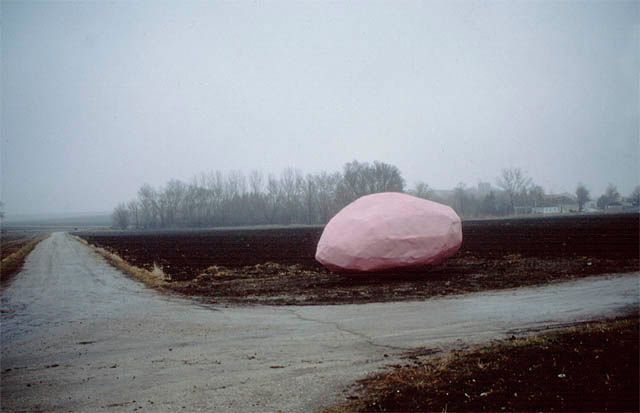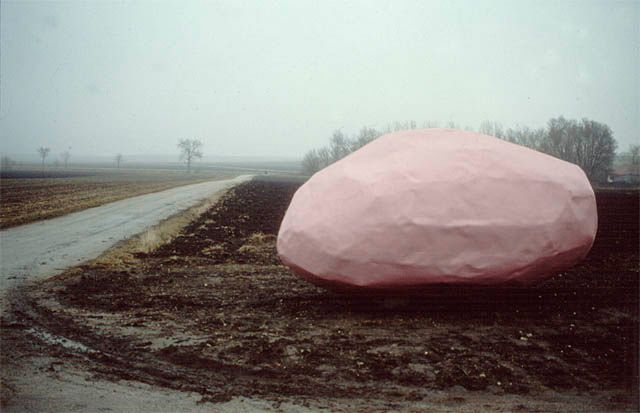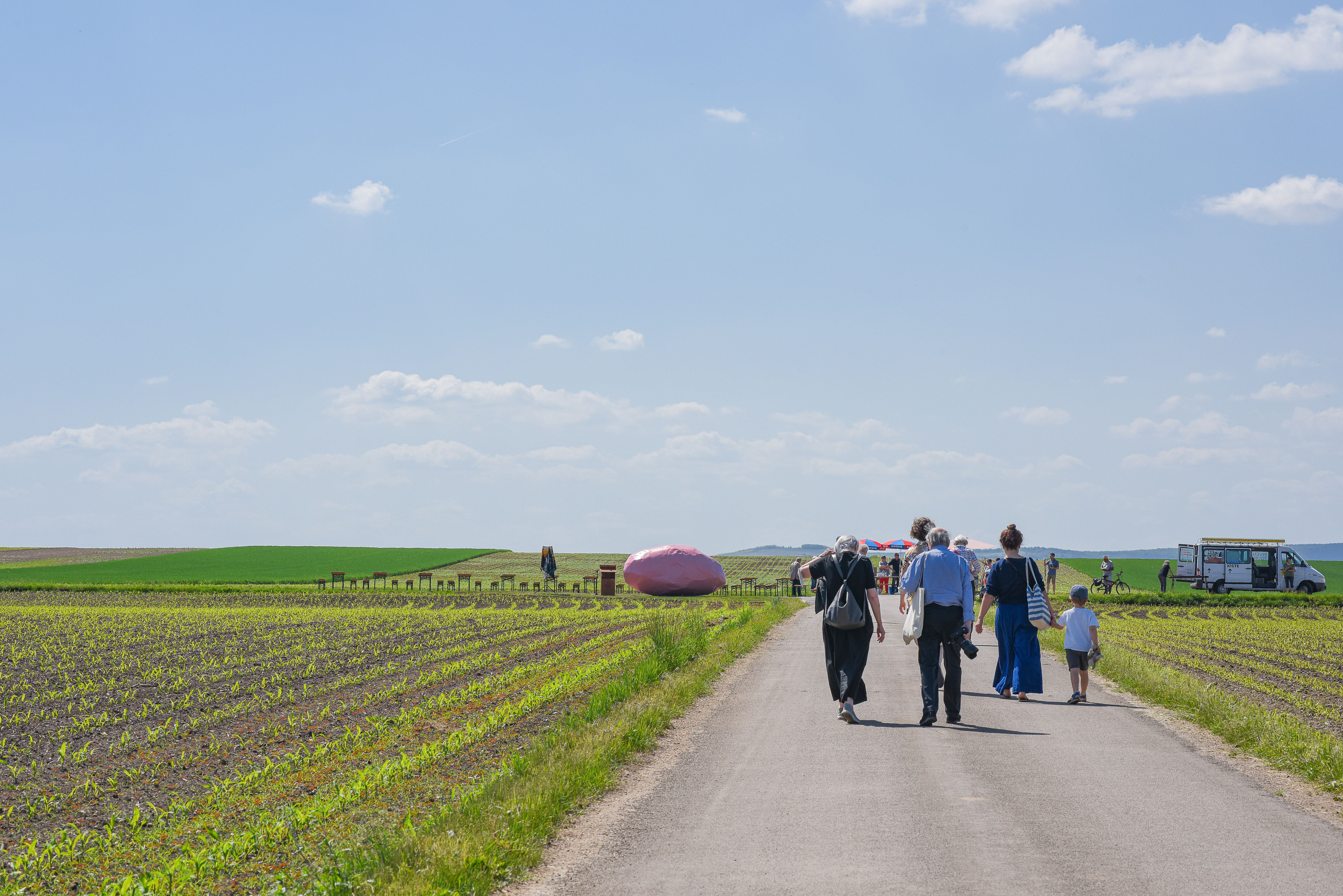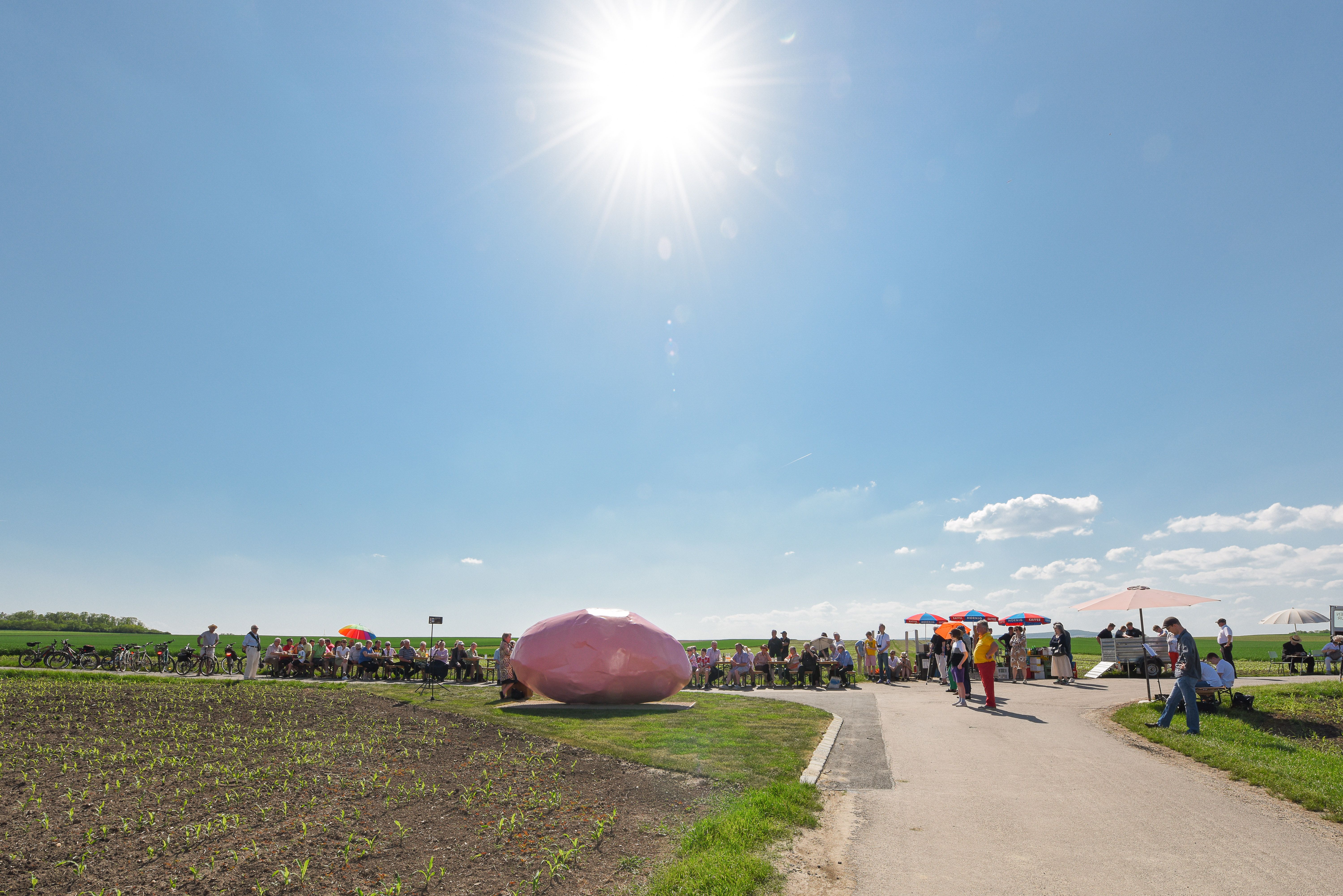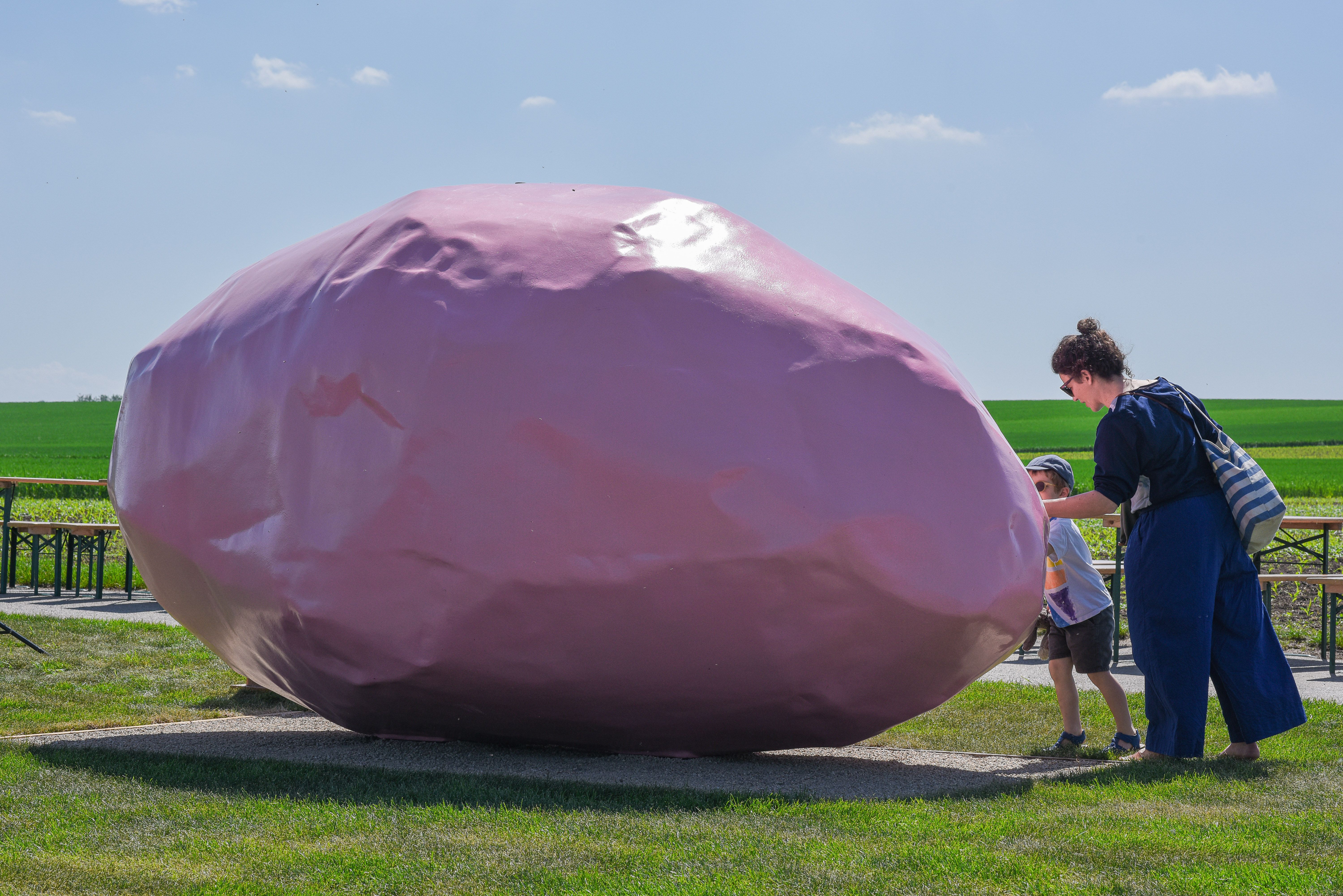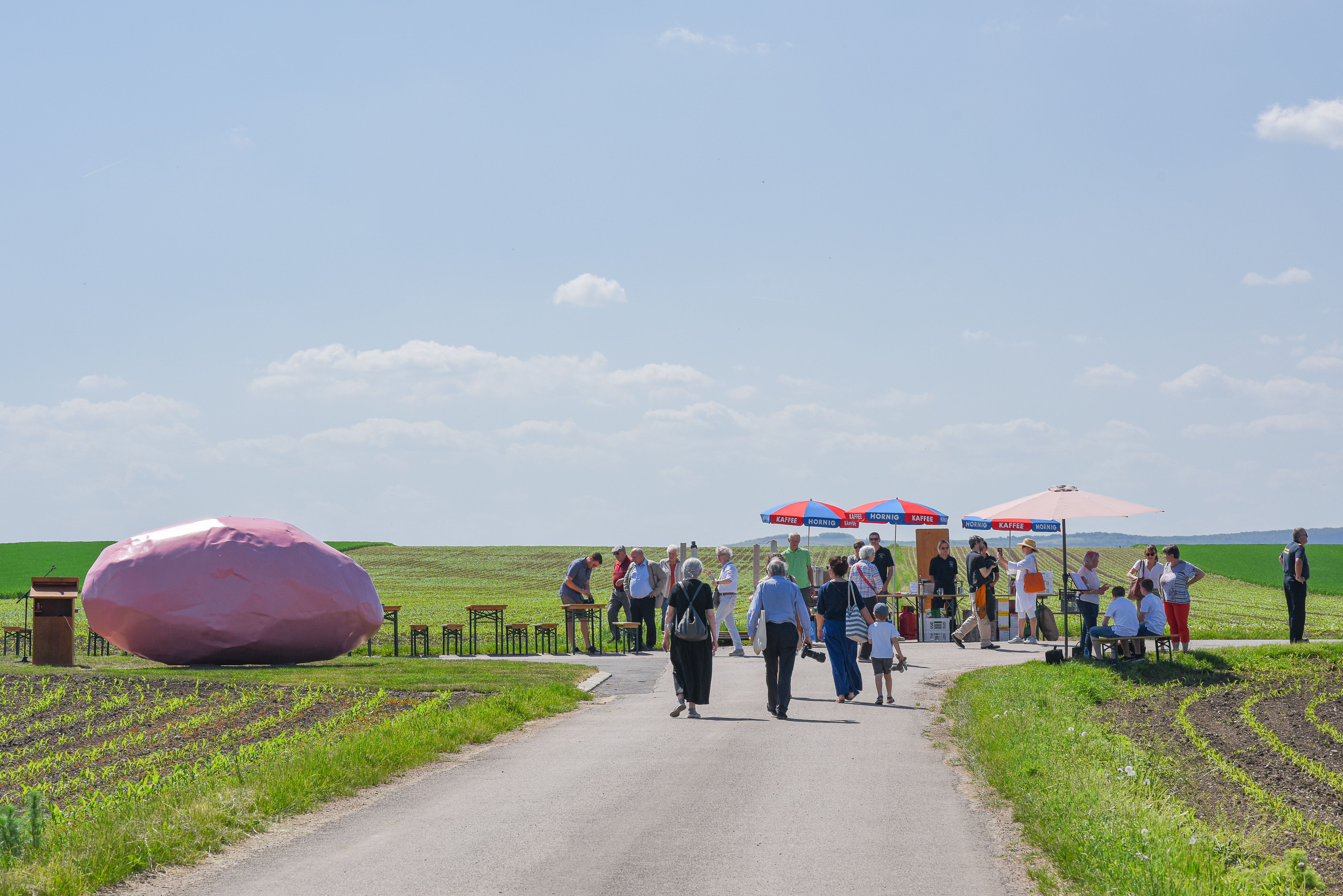Franz West
:
Warum ist etwas und nicht nichts
Back
Information
In May 2022, after being thoroughly conserved and restored, Franz West’s sculpture Warum ist etwas und nicht nichts (Why Is Something and Not Nothing) was reinstalled at its original location north of Stronsdorf, a site the artist had picked himself. Little has changed in the last 25 years in the flat, agrarian countryside around Laa an der Thaya near the Czech border. There are no telephone or utility poles, and no trees. The large pink ellipsoid, which stands just outside the village at the intersection of two farm roads, can almost always be seen from a great distance, unless the season and the cycles of the crops growing around it inhibit the view. It was West’s intention “that you really don’t see anything around it” and that the work “therefore has a concentrated power.”[1]
The egg-shaped structure made of sheet iron that has been painted pink has a twin, so to say. Together with its counterpart, which was intended for the Sculpture Projects Münster in 1997 and was made simultaneously, it is one of West’s core works. It reflects how he decided to produce outdoor sculptures after having been invited to a symposium about metal in Spital am Pyhrn. At the time, he said that this ran “counter to my habits, because, for me, an outdoor sculpture is outside of its natural frame of presentation.”[2] Questions regarding the status of sculpture and public art had been an important issue in art since the late 1980s and increasingly in the 1990s. When Sculpture Projects Münster took place for the third time in 1997 and showcased works by 70 international artists, West participated for the second time. While the Sculpture Projects focused primarily on the relationship between art and the city with site-specific works, it also revolved around the medium’s self-reflection, something that also played a major role for West. For him, it had always been a goal to connect theory and practice in his works, and he tried to deconstruct and expand the object quality of the works through participation or contexts of language. He regarded his works as aids for experience, and he attempted to relate them to the body. Although he created outdoor works already in the late 1980s, like his Lemurenköpfe (Lemur Heads), which were presented at the documenta in 1992, and Eo Ipso, which was a seating arrangement on a street corner for the second Sculpture Projects Münster and which also was his first work with metal, in contrast to his series of works with furniture, West called Warum ist etwas und nicht nichts “non-representational and also non-applicable.” Questions regarding three-dimensionality and other considerations of craftsmanship and technique became part of the experience triggered by this new artistic form. West regarded his two works for Münster, created in 1987 and 1997, as related, and he presented his thoughts on this in detail in the catalogue for Sculpture Projects Münster in 1997. Because (for West) Stronsdorf was as much a part of Münster as the other way around, he chose the title Warum ist etwas und nicht nichts for both works. West saw the title Eo Ipso from 1987 as an answer “namely, to the question ‘What is this (supposed to be)?’ (eo ipso is Latin for “by that fact alone”), adding: “this year’s sculpture [has] a question as its title.”
He described his work from 1997 by saying, “You see it now, find it in front of you, internalize it, and not yourself in it—not externalize yourself in the sculpture.” The title is an integral part of this work as well, which can be seen as a question or as a philosophical attitude. Quotes from philosophy were important to West, and Warum ist etwas und nicht nichts (Why Is Something and Not Nothing) refers to Parmenides. West transported this quote from its pre-Socratic origins to a kind of existential context: In his view, the “essential and existential motif”[3] is especially emphasized in Stronsdorf by the large expanse around it. While the logic of sculpture is, in principle, present and manifests itself in the ellipsoid, which West believed was the best primary form for lying on the ground, it continues to be animated through continually new dimensions, thoughts, sensitivities, and associations. This also explains why West did not regard Warum ist etwas und nicht nichts as an independent sculpture. He wanted it to be pink because pink is the color closest to our body, “to the body as the next-best color support,” thereby opening the door to a world of possible experiences, while integrating beholders.
[1] “Franz West im Interview mit Eva Badura-Triska,” in Susanne Neuburger, KunstViertel Niederösterreich, (Vienna: Falter Verlag, 2001), 188.
[2] Unless otherwise indicated, all quotes are from West’s statement in Skulptur. Projekte in Münster 1997, ed. Klaus Bußmann, Kasper König, Florian Matzner (Ostfildern: Hatje Cantz, 1997), 441–445.
[3] “Franz West im Interview mit Eva Badura-Triska,” 189.
Images (7)
